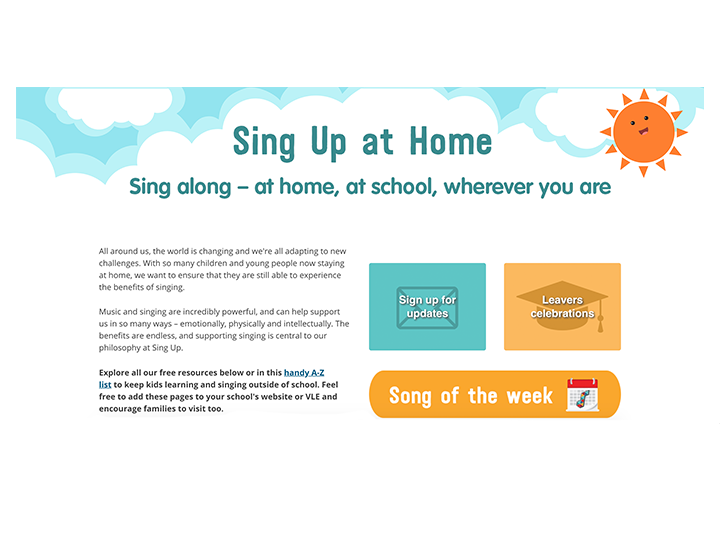
Here are some quick and simple ways for working with songs in the classroom. Keep in mind that with all of these activities, you can use material from anywhere. You can use stuff from the Song Bank, but feel free to reference nursery rhymes from your childhood or even songs that you've heard on the TV or radio.
- With young children, revisit some old favourites and change or add actions using the children's suggestions.
- Make up songs about key moments of the day and sing them when making the transition from one activity to another. For example, you could compose a tidying up song by using the melody of London Bridge is falling down. Add words about tidying up, such as:
‘When we stop and tidy up
Tidy up, tidy up,
When we stop and tidy up
Who'll be the quickest/neatest/quietest?’
‘When we stopped and tidied up
Tidied up, tidied up,
When we stopped and tidied up
John was the quickest.’
Build up a resource of short songs like this and sing them as relevant throughout the day. When the children get used to this, they may even start asking if they can lead the songs.
- Tell the children that you're going to mouth the words of one line from a song that they're currently learning. They must tell you which line it is. When they've done this, choose a student to mouth a line and the others must say which it is. It may help to say that it's like turning the sound down on the TV and being able to lip read. You can try mouthing the words in different ways, some more animated than others. It's always great to mix in a a few where they won't be able to tell what you are mouthing. After you've had a bit of fun with this, you can make the link to good singing diction.
- To get the attention of the class after lively activities, clap a rhythm to them and expect them to clap it back. When they're quiet, clap a rhythm from a song they know and they must clap it back. Can anyone sing the melody to you? Then sing the song with the whole class.
- Spot the intro: play the first notes of an introduction to a song that they know. Who can recognise the song? How much do they need to hear before they recognise what it is? If you don't play an instrument, this works just as well using audio tracks instead.
- Children (and adults!) often know the first verse and chorus of a song well but are much less certain of the other verses. Sing the third and fourth verse of a song they know and stop in the middle of a line before a crucial word. The students must put their hands up and tell you the next word. You could then see if any of the children want to try it out.
- When singing with them, encourage the children to draw the shapes of the melody in the air with their fingers. If you're facing them you must of it back to front. Then 'air-paint' a line to them and see if they can recognise which it is. Then 'air-paint' a line to them and see if they can recognise which it is. Draw a line on the whiteboard – it will look something like a graph. See if they can identify the melody. You're now on the way to introducing to them how notation works. Point out the similarity to 'join the dot' line pictures they might like doing. Can one of the students 'air-paint' a line of melody for the whole group?
- Sing a chorus from a song they sing regularly. Breathe in all the wrong places. Show the words on a whiteboard and discuss with the group where it would be better to breathe. What do they need to bear in mind?
- Invent warm-ups. Look at a favourite song and see if the children can invent some good warm-ups that are suggested by the song itself. It may be a little melodic or rhythmic motif that they can turn into a call-and-response warm-up or tongue twister based on a line of words.
Hopefully, you will find these suggestions useful for incorporating singing into your classroom on a daily basis. If you have any other ideas that you would like to share with Sing Up, please drop us a line.



